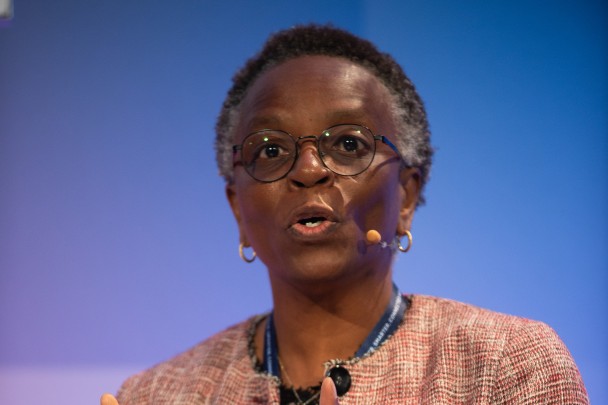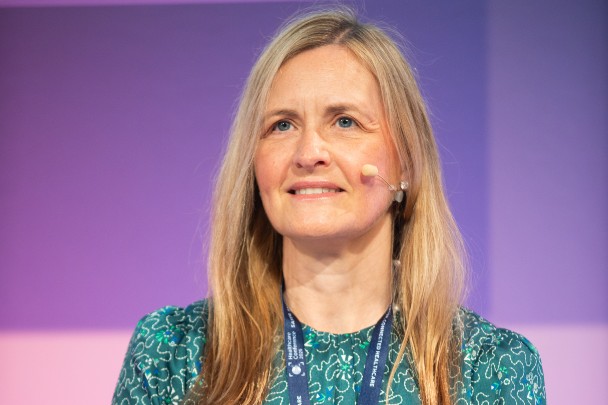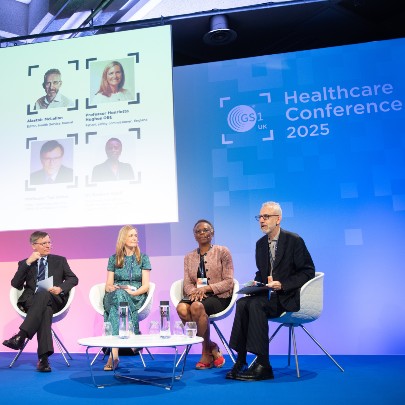May 28, 2025 Industry news
At the GS1 UK Healthcare Conference 2025, an expert panel explored how the NHS can deliver safer, more consistent care through better use of data, smarter technology and a culture of shared learning.
Chaired by Alastair McLellan, editor of the Health Service Journal, the session brought together key figures from across the health and care landscape including Ted Baker, chair of the Healthcare Services Safety Investigations Body; Dr Nnenna Osuji, chief executive of North Middlesex University Hospital NHS Trust; and Dr Henrietta Hughes OBE, England’s first patient safety commissioner.
Focusing on the practical steps needed to make patient safety a core part of how health services are designed and delivered, from system-wide collaboration to patient-centred design, the panel shared a range real-world insights on building a safer NHS. Read on for a summary of the some of the key points and themes they explored.
Safety needs to be a leadership priority
Alastair opened the discussion by highlighting how safety often remains under-emphasised at the leadership level. "I must admit, I don't hear a lot about safety when I talk to leaders," he said, noting that while emergency care frequently comes up, broader patient safety concerns are often absent.

Ted Baker, chair of the Healthcare Services Safety Investigations Body
Ted provided insight into the evolution of safety thinking in the NHS. "We need to stop seeing safety as an add-on," he urged. "It should be the foundation of how we design and deliver services."
Drawing from his extensive experience, Ted highlighted the importance of moving away from a culture of blame. "When something goes wrong, we too often ask: who made the mistake? Why did they make it? Do they need retraining? That’s not the right starting point," he said. Instead, he advocated for a systemic approach that examines how and why processes fail, and how to design out opportunities for error.
He also spoke about the need to look internationally for inspiration. "There are excellent safety systems around the world we can learn from. We're not starting from scratch – there's a body of global knowledge we can apply locally."
Using data and technology to drive change
Nnenna built on this point. "The current model of incident reporting isn’t working," she explained. "There’s a vast number of reports, but little sense of patterns or system-wide learning." She emphasised the need for smarter use of data. "We have to be much more disciplined in how we use data to draw insights and share them across the system."
For her, the answer lies in standardisation and technological support. She pointed to simple changes with big impact.

Dr Nnenna Osuji, chief executive of North Middlesex University Hospital NHS Trust
"Patient identification is a prime example. Barcode technology has been around for years, but uptake is still patchy," she noted. "This is low-hanging fruit."
GS1 standards, including those adopted through the NHS Scan4Safety programme, were acknowledged as a key part of the solution, helping to ensure that products, locations and people can be accurately identified and tracked throughout the healthcare system. "Scan4Safety has shown us what’s possible when you get the basics right," said Nnenna. "It’s a proven approach to reducing errors, cutting waste and freeing up time for care."
She also highlighted the role of partnerships in spreading effective practice. "When one trust makes progress, we should be thinking about how that learning can benefit the whole system. We’re not in competition. We’re in this together."
Nnenna then pointed out the importance of usability. "Technology should support clinicians, not frustrate them. Systems must be designed with real users in mind. If they’re clunky or counterintuitive, they won’t get used properly and that puts safety at risk."
Keeping patients at the centre
Henrietta brought the conversation back to the patient perspective. "We have to remember who we’re doing this for," she said. "Patients and families who’ve experienced harm want honesty, accountability and to know that it won’t happen again."

Dr Henrietta Hughes OBE, England’s first patient safety commissioner.
She called for greater listening and empathy.
"We can learn so much by hearing directly from patients, by really listening to what they’re saying rather than just ticking the engagement box."
Henrietta also spoke about the importance of visibility. "It’s not enough to say safety is important. Patients need to see that it’s being acted on in ways that are transparent and accessible."
She advocated for embedding patient voices more deeply into governance structures.
"It's about moving from consultation to co-production – where patients aren't just giving feedback, they're helping design the services themselves."
Shared goals across the system
The panellists agreed that technology and data must be enablers of change, not distractions. "There’s a danger that digital transformation becomes the goal, rather than the means," said Nnenna. "We need to focus on the outcome: safer, more consistent care."
The conversation also touched on leadership and workforce. Ted reflected, "We’re asking a lot of people who are stretched thin. But unless safety is a shared priority at every level – from the boardroom to the bedside – we won’t get the consistency patients deserve."
Consistent outcomes require consistent standards. "We need to be clear about what good looks like," said Henrietta. "Not just in theory, but in the day-to-day practice of care."
Closing the session, Alastair highlighted the need for joined-up thinking. "This isn’t about one trust or one team. It’s a whole-system challenge that needs a whole-system response."
The message from the panel was clear: improving patient safety requires more than well-meaning policy. It needs a shift in mindset, a commitment to learning, and practical action on the ground. As Henrietta put it, "The future of safety isn’t just about reacting when things go wrong. It’s about building systems that make it harder for harm to happen in the first place."
By making better use of data, expanding the use of GS1 standards, listening more closely to patients and encouraging a culture of openness, the NHS can take meaningful steps towards delivering the safe, high-quality care that every patient deserves.



